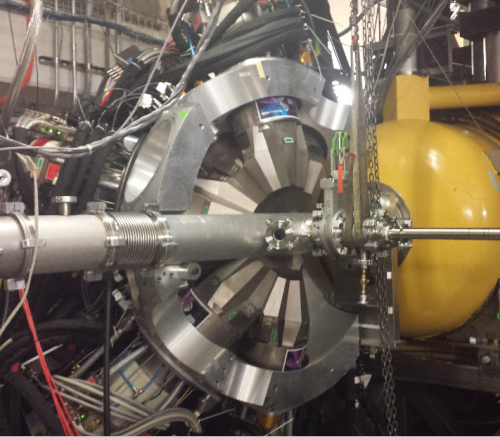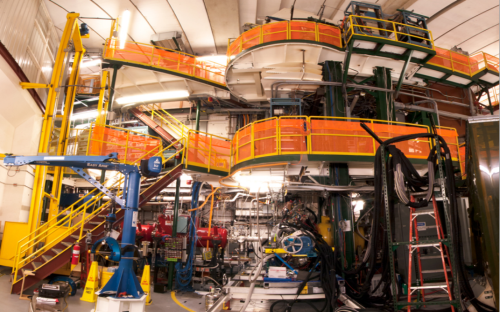Researchers from many institutions, including the Institute of Modern Physics of the Chinese Academy of Sciences, have lately made progress in the study of the electron-capture rates of the 93Nb by using the charge-exchange reaction, which helps us understand core-collapse supernovae (CCSNe).
Some massive stars end their life as CCSNe, which is the most energetic and mysterious event in the universe. A large amounts of energy will be released during CCSNe and the whole galaxy can be lighted up. Decades of efforts have been devoted to understanding CCSNe while some open questions still remain.
Computer simulation is an important tool to help us understand the interior of CCSNe and uncover its mystery. One of the important physical inputs in CCSNe simulations is the electron-capture rate. Previous studies have shown that a group of neutron-rich nuclei in the N=50 region contribute most strongly in capturing electrons, hence reducing the electron fraction and changing the composition of the collapsing stars. According to the shell-model,the so-called Pauli-blocking effects play an important role in the N=50 region.
However, electron-capture rates of neutron-rich nuclei cannot be directly studied in the terrestrial environment, for this kind of reaction is endothermic and just does not happen in the terrestrial environment. One of the alternatives is to use the charge-exchange reaction, because its cross section is proportional to the transition strength which is in turn proportional to the electron-capture rates.
In this work, researchers studied the electron-capture rates of the 93Nb—in the vicinity of the above-mentioned N=50 region—by using the 93Nb(t,3He+γ) charge-exchange reaction. The experiment was performed in the National Superconducting Cyclotron Laboratory in the Michigan State University. The high precision S800 spectrometer in combination with the Gamma-Ray Energy Tracking In-beam Nuclear Array, GRETINA, was used for the measurement.
The results show that the widely-used approximation proposed by K. Langanke et al. for the calculation of electron-capture rates does not take into account the Pauli-blocking effects properly. It fails to predict the experimental electron-capture rates well and therefore, is unsuitable for calculating electron-capture rates in this region, especially in lower stellar density and temperatures.
The study was published in Physical Review C.
Link to the paper: https://journals.aps.org/prc/abstract/10.1103/PhysRevC.101.014308

Fig.1 The detector setup: GRETINA (Image by J.C.Zamora)

Fig.2 The detector setup: S800 (Image by S.Noji)

